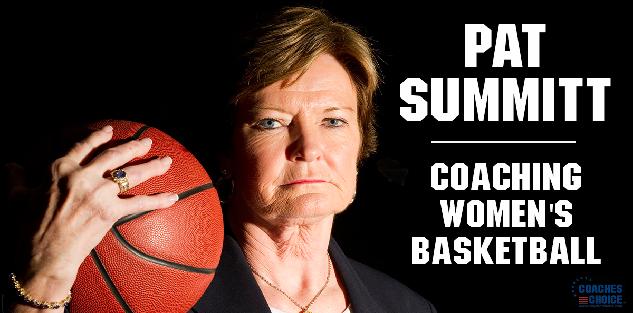“We keep score in life because it matters. It counts. Too many people opt out and never discover their own abilities, because they fear failure. They don’t understand commitment. When you learn to keep fighting in the face of potential failure, it gives you a larger skill set to do what you want to do in life. It gives you vision. But you can’t acquire it if you’re afraid of keeping score.”
Key Takeaways:
- Deep-Rooted Character Traits
- Taking Ownership
The first chapter felt like an entire book in itself. It starts with Coach Summitt during her adolescence being taught at an early age two things:
“You’ll be finished when it’s done. And it’s not done ’till it’s done right.”
“Don’t you cry girl. I better not see you cry.”
These two quotes were on page one to start the book. From an outsider’s perspective, they both seem to personify the legend that is the late, great Pat Summitt. Toughness and precision (competitive spirit) were two ingredients – amongst many others – that seemed ingrained early in Coach Summitt’s upbringing that would later carry her throughout her career and life.
We are creatures of habit and deep-rooted character traits. Looking back there aren’t many one-liners that my parents had that seem to resonate most with how I am on the sidelines today. But, I think about how my parents always sat away from the other families during our youth games to simply sit in comfort to view the games. And what my father had said after a game where I felt my coach got on me pretty hard – absorb the most constructive parts of the content, as opposed to the delivery of the message. Teachers and coaches give feedback in a variety of ways; it was my job as an athlete to dissect the message that they are trying to convey within the context of the feedback to use to my advantage moving forward.
My coaching style is competitive in nature because I was a younger brother of an athlete that was pretty successful during his day, so I was inherently always challenged with trying to prove myself. I am stubborn in principles, on and off the court. Couldn’t tell you where that is derived from, but aspects of the game like going zone or gimmicky styles of play are not in my repertoire. Far more conventional in style, but do believe the best brand of basketball comes from the freedom of play in empowered athletes. My story wouldn’t create a book, but it is interesting to consider our upbringing and how they have translated to our coaching disposition.
Taking Ownership
There was no quit in Pat Summitt. Unfortunately, there was a time where she would have to accept her diagnosis.
The introduction to the book covers adolescence to retirement. Everywhere in between, there is a clear adoration for her son, her players, her staff, and her time at the University of Tennessee. Affectionately known as “Mama Pat,” she was the mayor of Knoxville that took over a program at the age of twenty-two years old. Her life was embedded in the Lady Vols program and the idea of having to quit was incomprehensible to her when first diagnosed with dementia.
“Quit? Quit? Coaching isn’t social work, but it’s more than just a game – it’s a heartfelt vocation, in which you are powerfully bonded to students who need you. Often, they need you more than they know they need you. It’s a job that engages all your mind and muscle and spirit, a job in which you grab kids by the arm and pull them out of their respective emotional fires, whatever that fire is, and show them what real self-worth looks like.”
The second half of the first chapter detailed a lot of her early struggles with mental mistakes or memory loss. She started to lose confidence in her own ability to lead or operate a program because of her fear of dealing with daily interactions. Strength seems significant to Coach Summitt, whether it was convincing her team to dig for more during conditioning or by dismissing her doctor’s orders to rest for a given period of time. Throughout her career as a coach, she preached “taking ownership” insisting that the blueprint for real strength exists in the difficult things.
“I’d spent four decades teaching myself to see ten players at once, the whole ninety-four feet of hardwood and all the movement on it, the multiple actions. I was accustomed to analyzing patterns and almost instantaneously ordering up attacks and counters; only now I saw an indistinguishable blur, flashes and bursts.”
We spend a lot of time as coaches teaching others how to prepare for life, that we sometimes refuse to accept our own fallibilities. Dealing with the diagnosis of a disease doesn’t come with any blueprint, but Coach Summitt was able to fall upon her deepest-rooted character traits to continue to live by toughness.


